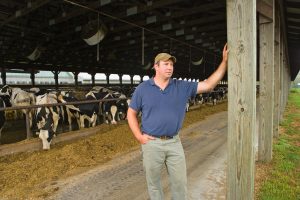|
|
Capacity Matters For CED, Part 2: News For the NC Food Industry and FarmersBy Maureen BernerPublished January 19, 2016
While the topic is food, the underlying theme for CED professional across all these is basic capacity issues to purchase, store, process and serve food in our communities. The “school lunch” angle of this issue is important, but CED officials will also be interested in the local food producers, packers, processors and distributors required to accomplish effective local food distribution. Either way, the findings have ramifications for our state’s farm and food industries broadly. A lot of money is at stake. The school meal and Farm to School programs, alone, spend close to $100 billion nationally each year. What does ‘capacity’ mean? In a prior post, the importance of local capacity for CED was raised. Capacity was defined on four levels:
A specific example of how these issues come into play was offered: a local farmer’s efforts to bring more product to institutions in communities, such as schools, rests in part on whether the school kitchen can accommodate the produce. Does it have a cooler? Does the kitchen rely on warming ovens? Are there enough staff available at the right hours to prepare local produce? If so, do they have the appropriate training? Can the central office (or whomever is appropriate) handle the billing?
The findings confirm the results of a 2014 national study by the Pew Charitable Trusts titled “Schools Need Updated School Kitchen Equipment.” The study puts the equipment needs of North Carolina school kitchens at over $140 million. In addition to basic purchases such as carts, refrigerators, ovens and freezers, 70 percent of schools said infrastructure improvements were also needed. It is important to note the Pew study is based on a 2012 survey, and therefore does not reflect either increased needs or potential improvements already made through state and local efforts.
|
Published January 19, 2016 By Maureen Berner
 Food is in the news, and CED professionals should look below the surface images and arguments to a fundamental question raised about local capacity issues important to the NC farm and food industry. In honor of the University of North Carolina at Chapel Hill Food for All all-university 2015-2017 academic theme, this post offers the following food for thought (pun intended):
Food is in the news, and CED professionals should look below the surface images and arguments to a fundamental question raised about local capacity issues important to the NC farm and food industry. In honor of the University of North Carolina at Chapel Hill Food for All all-university 2015-2017 academic theme, this post offers the following food for thought (pun intended):
- The first ever state-wide study of the capacity of NC school kitchens is now available (more below)
- This week, a new documentary titled “Where to Invade Next?” by controversial filmmaker Michael Moore will open across the country featuring a comparison of school lunches in the United States and France (guess who wins?)
- The Child Nutrition Act, the five-year federal reauthorization of school meal and related programs, will be taken up by Congress this week
- A guest editorial titled “The Real Problem with Lunch” speaking to both the Moore documentary and the national legislation was published last Friday in the New York Times
While the topic is food, the underlying theme for CED professional across all these is basic capacity issues to purchase, store, process and serve food in our communities. The “school lunch” angle of this issue is important, but CED officials will also be interested in the local food producers, packers, processors and distributors required to accomplish effective local food distribution. Either way, the findings have ramifications for our state’s farm and food industries broadly. A lot of money is at stake. The school meal and Farm to School programs, alone, spend close to $100 billion nationally each year.
What does ‘capacity’ mean? In a prior post, the importance of local capacity for CED was raised. Capacity was defined on four levels:
- physical infrastructure (bricks and mortar, space, location)
- equipment (the mobile tools needed to implement the program – cars or trucks, storage containers, tables, machines, computers, desks, supplies, etc.)
- personnel (number, type, hours, skills, expertise)
- administration (ability to manage the program through management personnel, financial, HR, oversight and accountability systems)
A specific example of how these issues come into play was offered: a local farmer’s efforts to bring more product to institutions in communities, such as schools, rests in part on whether the school kitchen can accommodate the produce. Does it have a cooler? Does the kitchen rely on warming ovens? Are there enough staff available at the right hours to prepare local produce? If so, do they have the appropriate training? Can the central office (or whomever is appropriate) handle the billing?
 This was not a hypothetical – The survey of school kitchen capacity, mentioned above, was conducted in a joint effort by the Center for Environmental Farming Systems at North Carolina State University, the School of Government at UNC at Chapel Hill and the North Carolina Department of Public Instruction. The survey found:
This was not a hypothetical – The survey of school kitchen capacity, mentioned above, was conducted in a joint effort by the Center for Environmental Farming Systems at North Carolina State University, the School of Government at UNC at Chapel Hill and the North Carolina Department of Public Instruction. The survey found:
- The vast majority of school nutrition administrators were willing to purchase more fresh NC produce, specifically leafy greens, sweet potatoes and apples
- Those unwilling to do so were constrained by limited labor and equipment
The findings confirm the results of a 2014 national study by the Pew Charitable Trusts titled “Schools Need Updated School Kitchen Equipment.” The study puts the equipment needs of North Carolina school kitchens at over $140 million. In addition to basic purchases such as carts, refrigerators, ovens and freezers, 70 percent of schools said infrastructure improvements were also needed. It is important to note the Pew study is based on a 2012 survey, and therefore does not reflect either increased needs or potential improvements already made through state and local efforts.
 The broad lesson from this example is that if capacity were greater, perhaps more produce would be purchased and served, generating more economic activity, and in turn generating greater resources to expand capacity. Of course, in this example, the hope is the economic activity is centered on local producers, businesses and workforce, but without adequate capacity, regardless of the program or issue involved, any expansion will be constrained. Local capacity building in other states may generate business for North Carolina. Politics are not the only thing that is local. Pursuing local economic development may rest in developing local capacity – and local demand — in your own community.
The broad lesson from this example is that if capacity were greater, perhaps more produce would be purchased and served, generating more economic activity, and in turn generating greater resources to expand capacity. Of course, in this example, the hope is the economic activity is centered on local producers, businesses and workforce, but without adequate capacity, regardless of the program or issue involved, any expansion will be constrained. Local capacity building in other states may generate business for North Carolina. Politics are not the only thing that is local. Pursuing local economic development may rest in developing local capacity – and local demand — in your own community.
Author(s)
Tagged Under
This blog post is published and posted online by the School of Government to address issues of interest to government officials. This blog post is for educational and informational Copyright ©️ 2009 to present School of Government at the University of North Carolina. All rights reserved. use and may be used for those purposes without permission by providing acknowledgment of its source. Use of this blog post for commercial purposes is prohibited. To browse a complete catalog of School of Government publications, please visit the School’s website at www.sog.unc.edu or contact the Bookstore, School of Government, CB# 3330 Knapp-Sanders Building, UNC Chapel Hill, Chapel Hill, NC 27599-3330; e-mail sales@sog.unc.edu; telephone 919.966.4119; or fax 919.962.2707.

